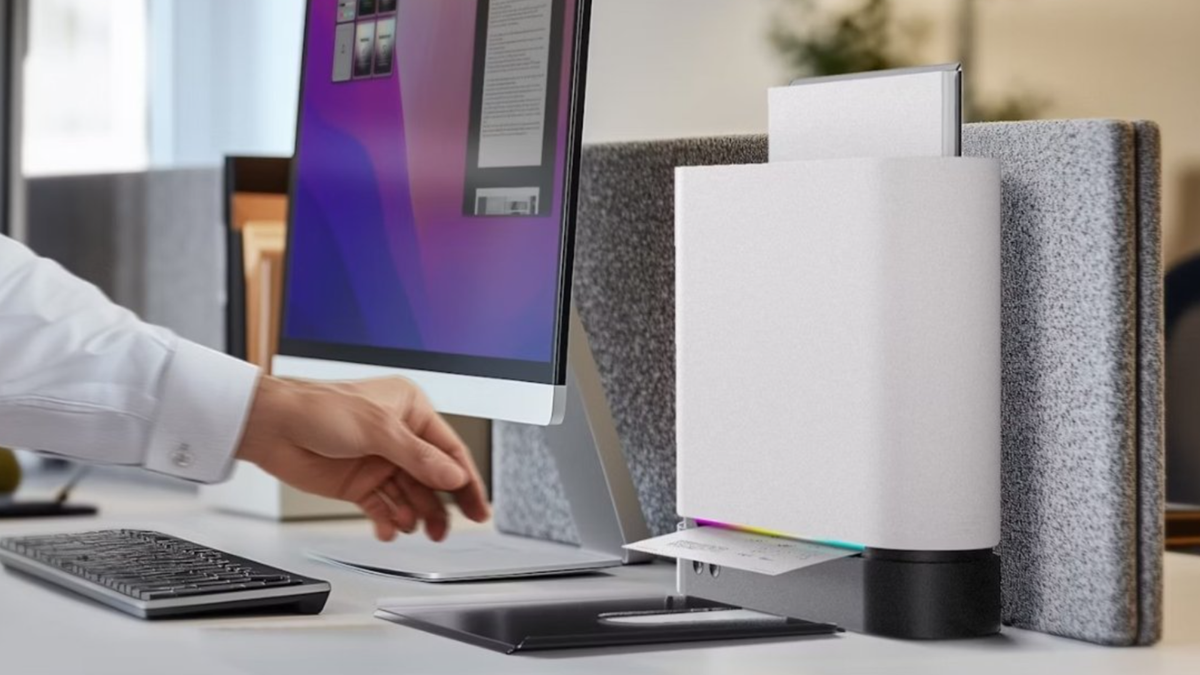Over the past few years, many people have added a microcurrent device to their skincare regimen, hoping it will be anti-aging, produce collagen, sculpt facial muscles and improve skin texture. Many celebrities have even promoted the use of these devices in their own skincare routine videos. But do these at-home microcurrent devices from popular brands like NuFace, ZIIP, Therabody and Foreo actually work?
To learn more about whether a microcurrent device is worth adding to your collection of skincare tools, we reached out to dermatologists to find out if they work and if they're worth the cost.
Do microcurrent devices work when used at home?
At-home microcurrent devices aren't cheap and can cost hundreds of dollars. If you're thinking about investing in one, you might be wondering whether they actually work. What do the experts say?
"Yes, at-home microcurrent devices can provide noticeable benefits, though they're generally less powerful than professional-grade treatments," said Hannah Kopelman, a dermatologist at Kopelman Aesthetic Surgery. "These devices deliver low-level electrical currents designed to stimulate facial muscles and boost circulation. Over time, this can create a temporary lifting effect and provide mild improvement in skin tone."
While the effectiveness of at-home microcurrent devices hasn't been thoroughly tested, some research studies show that they can provide real results. In a 2024 study, 56 people were instructed to use the Slendertone Face microcurrent device and 52 people were placed in a control group. After using the Slendertone Face device five days per week for 12 weeks, participants reported significantly better skin tone, radiance and fewer wrinkles compared to the control group.
But before you start using an at-home microcurrent device, it's important to set realistic expectations.
"At-home microcurrent devices can be a beneficial part of your skincare routine, but they work best for mild improvements and maintenance, rather than dramatic changes," said Kopelman. "For individuals looking for more immediate or pronounced results, professional treatments remain the gold standard."
At-home microcurrent device benefits
When you use an at-home microcurrent device consistently, it can have a wide range of benefits for your skin. "The main benefits include mild lifting and firming of the skin, improved circulation and enhanced lymphatic drainage, which can reduce puffiness. Some users also report that their skin looks more refreshed and radiant after consistent use," Kopelman said.
For deeper wrinkles and significant sagging, however, Kopelman said these devices probably won't have the same effect as professional treatments or more invasive in-office procedures.
While these at-home devices can be effective, the results aren't one-size-fits-all. According to Dr. Robyn Gmyrek, a dermatologist at New York-based UnionDerm, "The benefits of at-home microcurrent devices vary from person to person based on age, health status and behavioral choices, like sun exposure, smoking, diet and the specific device used."
Like with most skin care treatments and procedures, you shouldn't expect results immediately. "With at-home devices, consistency is everything," Gmyrek said. "I recommend using a microcurrent device daily, or at least three to five times per week. Think of it like the gym -- if you don't continue to go, you will lose the benefits."
Do at-home microcurrent devices have any negative side effects?
Generally speaking, at-home microcurrent devices are safe when used as directed. And because the microcurrents are small, the treatments shouldn't be painful. Some side effects are possible, though.
"Some people may experience mild redness or a tingling sensation during use, but this is usually temporary. However, improper use -- like applying excessive pressure or using the device for longer than recommended -- can lead to skin irritation or muscle fatigue," said Kopelman.
In the 2024 study referenced above, only a few participants experienced mild skin redness during their treatments. None of the participants had any other adverse reactions, suggesting that these devices are mostly safe.
While there are dozens of at-home devices that deliver microcurrents, they're not all created equal. Each device works differently and has unique advantages and drawbacks. If you're in the market for an at-home microcurrent device, there are a few things you should look for, according to Gmyrek. She recommends buying a device with FDA clearance, multiple intensity levels and different functions, like the option to use LED light therapy. You should also look for a device that comes with or requires a conductive gel to properly transmit the microcurrent. Pick a device from a well-established brand with positive user and expert reviews.
How to use an at-home microcurrent device
Before using an at-home microcurrent device, read the manufacturer's instructions. Each device might be slightly different, but here's a general overview of how these devices should be used:
- Wash your face: You should always start with clean, dry skin before using a microcurrent device.
- Apply conductive: Most microcurrent devices require a conductive gel that allows the device to glide over your face and helps deliver the current into the deeper layers of your skin.
- Select the intensity level: If your device has multiple intensity settings, select the one that is right for your skin at the time of use. Start low and gradually increase once you get used to the different settings.
- Glide the device over your face: Using light pressure, gently move the device across your face in an upward and outward motion. You can use the device on your jawline, cheekbones, forehead and the sides of your neck (make sure to avoid the thyroid in the center).
- Remove the gel from your face and device: Once you're finished, wash the gel off your face. Follow the manufacturer's instructions for cleaning the device -- generally, you can wipe off the gel with a soft, clean cloth. Then, you can continue with the next steps in your skin care routine.
- Repeat based on the manufacturer's recommendation: Most at-home microcurrent devices should only be used five times per week, for 3 to 5 minutes, but some devices can be used daily. Check the instructions to see how often your device should be used for optimal results.
Best microcurrent devices
To figure out which microcurrent devices are the best, CNET wellness editor Anna Gragert tested six devices over the course of two months. Based on price, modes, accessories, features, FDA clearance, cleaning instructions, app compatibility and the required conductive gel, she found the NuFACE TRINITY+ to be the best microcurrent device overall.
If you're looking for a device with more features, such as one with massage and LED light therapy, the TheraFace Pro is recommended. With this device, you can also cleanse the face. Hot and cold rings are sold separately, but can be used with the device.
Can you overdo it with an at-home microcurrent device?
At-home microcurrent devices aren't without risks, and using them too often can do more harm than good. "Overuse can lead to inflammation in the skin, redness and swelling," said Dr. Gmyrek. If that happens, you should stop using the device immediately until your side effects resolve.
"Using an at-home microcurrent device too frequently can also cause muscle fatigue, leaving the facial muscles feeling sore or overly tight. Sticking to the manufacturer's recommended usage schedule can help avoid this issue," added Kopelman.
Before you start using an at-home microcurrent device, read the instructions on the frequency of use, which will vary by product. For example, the Foreo Bear is designed to be used every day. However, the NuFace Trinity Plus and SkinGym Microcurrent Wand should be used five times per week for 60 days, and then up to three times per week for maintenance.
Don't be tempted to use the device more often than what's recommended. Experts agree that overusing won't provide better benefits or faster results. Plus, you could end up damaging your skin in the process.
Who shouldn't use an at-home microcurrent device?
Although at-home microcurrent devices are typically safe, not everyone is a good candidate.
"Individuals with certain medical conditions, such as epilepsy, a pacemaker or other implanted electrical devices, should avoid using microcurrent devices, as the electrical currents could interfere with their function," said Kopelman.
Microcurrent devices should also be avoided during pregnancy, unless it's cleared by a healthcare provider.
Professional vs. at-home microcurrent devices
Microcurrent is a popular offering at many medical spas and skin care clinics as a standalone treatment or an add-on to other services. According to experts, in-office treatments offer more bang for your buck.
"Professional microcurrent devices used in clinical settings are much more powerful and can deliver a more significant, long-lasting lifting effect in a shorter period of time," said Kopelman.
Additionally, professional treatments can be better personalized to your needs, potentially giving you better results, faster.
"Licensed professionals are also trained to adjust settings based on your skin's needs, which makes the treatment more customized," said Kopelman. "At-home devices, by contrast, are designed to be safe for general use, so they deliver lower current levels and require more frequent treatments to maintain results."
At-home microcurrent devices aren't cheap, either. FDA-cleared devices can cost anywhere from $150 to upwards of $400. Most devices also require a conductive gel, which is sold separately.
However, at-home devices tend to be slightly cheaper than professional procedures. In-office microcurrent treatments often cost between $250 and $500 per session, but it depends on various factors, including the type of treatment, length of treatment and your location.
The bottom line
At-home microcurrent devices can be a great addition to your skin care routine if you want to improve skin firmness, reduce puffiness and sculpt your face. But it's important to have realistic expectations about the results. While at-home devices do work, they aren't nearly as effective as professional treatments.
If you're on the fence about getting an at-home microcurrent device, there are a few things you can consider. First, think about your skin goals. An at-home microcurrent device won't get rid of deep wrinkles, and it's not an alternative to Botox, dermal fillers or skin lasers.
You should also determine how often you will realistically use the device. Here's some advice from Gmyrek: "Be honest with yourself -- if you aren't going to use an at-home device consistently, don't bother spending the money on it. Instead, spend that money on in-office treatments that are more effective."










 English (US) ·
English (US) ·